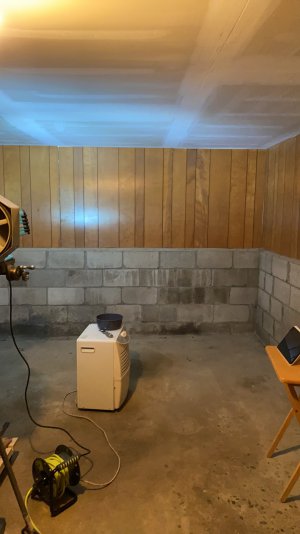Ive been busy busy working in my garage the past 3 days. Moved my mill and lathe out of the way to do some paneling to take oil splatter and then caulked all around it to prepare for a paint job. I plan to paint the ceiling and the walls tmr and then do the floor on wednesday and thursday for a second coat. The floor i am going to do a can of epoxy paint.
Side note i had issues with my mil that i could not get the x to travel at all. I then remembered that the drive gear for the auto feed was engaged and that is why i could not move the x. Move the x handle in to disengage the motor and now she moves. A BONUS that i found out and completely forgot is that the second control box is for a VFD. No belt changes to deal with in my future unless i need a different range or torque!
Side note i had issues with my mil that i could not get the x to travel at all. I then remembered that the drive gear for the auto feed was engaged and that is why i could not move the x. Move the x handle in to disengage the motor and now she moves. A BONUS that i found out and completely forgot is that the second control box is for a VFD. No belt changes to deal with in my future unless i need a different range or torque!







